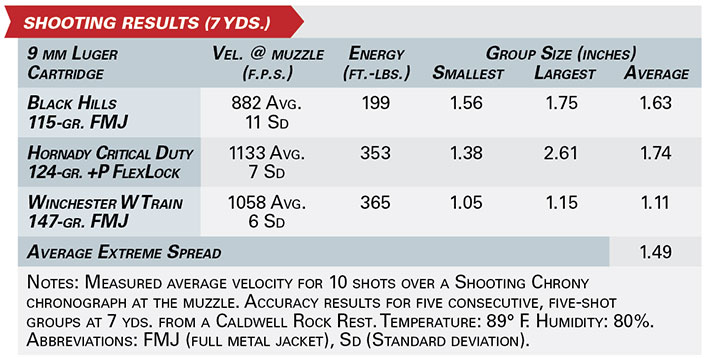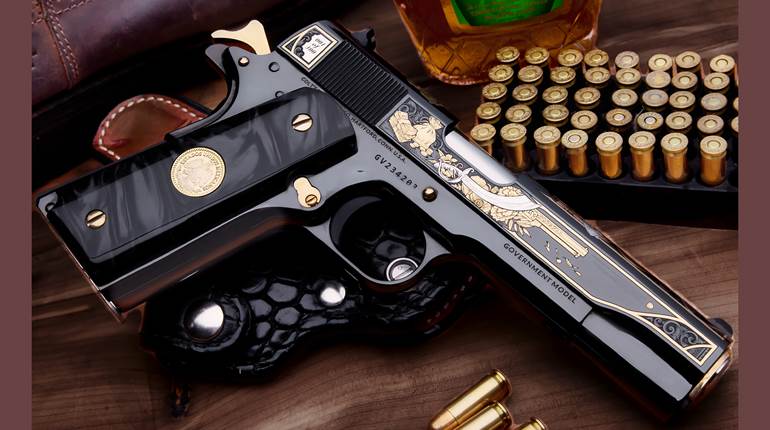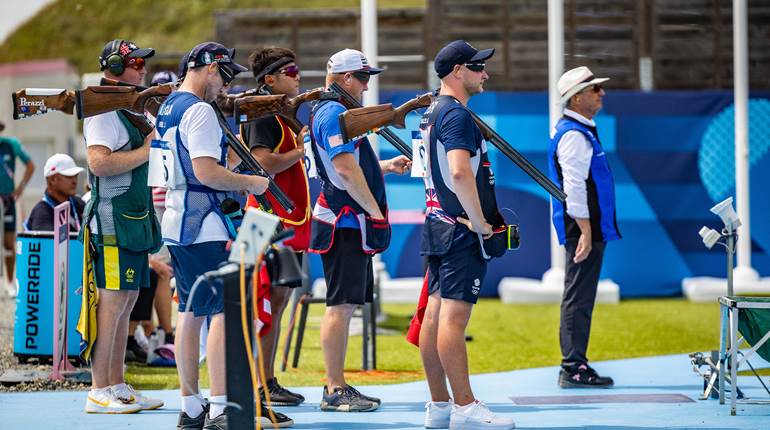
In an industry where polymer-frame models make up the lion’s share of the handgun marketplace, there are still plenty of shooters who believe in the classic styling that only an all-metal gun can deliver. Metal guns are known for better recoil mitigation, balance and, some might even argue, peace of mind. Staying true to its machining lineage, Kimber America expanded its line in late 2018 with the addition of a new subcompact pistol, the EVO SP, the company’s first crack at a striker-fired pistol since the ill-fated Solo. In 2019, the EVO SP ended up as one of our Editor's Picks, and we outline the reasons why here. As of press time, five variants of the EVO SP are offered, and our test gun is an example of the CS (Custom Shop) version.
At an overall length of just 6.1", the new pistol is small enough for pocket carry, yet the 21 ozs. of all-metal construction help soak up the recoil of its 9 mm Luger chambering. The stainless steel slide houses a 3.16" barrel and is topped with a set of TruGlo Tritium Pro sights. Each gun ships with two seven-round detachable box magazines, both of which incorporate extended floorplates that bring the height of the EVO SP to 4 5⁄8". A recoil-operated, locked-breech design, the barrel hood of the gun engages its ejection port when in battery.

Great effort was put into making the firearm controllable to shoot. This was evidenced by the deep Stiplex checkering on the frontstrap and similarly inspired stippling on both the G10 stocks and the backstrap panel. The same texturing is found both fore and aft of the slide in lieu of serrations, as well as on the magazine release and slide stop. The stock panels were not only attractive but functional and comfortable, even after firing close to 200 rounds of defensive ammunition in one range session. The slide’s black ferritic nitrocarburizing (FNC) finish pairs well with the aluminum frame’s Charcoal Gray KimPro treatment, combining to create a subtle two-tone appearance.

During function testing, we measured a consistent trigger break of 5 lbs., 1 oz., with our Lyman Digital Trigger Scale. The trigger released after 1/4" of travel, and required 1/8" of forward motion in order to reset. In addition to a blade-in-trigger safety that deactivates when pressure is applied to the center tongue, there are also two passive safeties present—a striker block prevents accidental movement of the striker in case the pistol is dropped and a disconnector keeps the gun from firing when out of battery. We also noted that the Kimber EVO does not have a magazine safety, and can therefore be fired without a magazine in place. The EVO SP’s push-button magazine release is reversible to accommodate southpaw shooters, however, a slide stop is only present on the left side of the frame for right-handed use.
On the range we tested three different types of ammunition from Black Hills, Hornady and Winchester that included several different weights and bullet profiles. The Kimber was able to handle our +P loads, however +P+ ammunition is not recommended by the manufacturer. As we cycled through each ammunition brand the seven-round single-stack magazine dropped free from the frame each and every time. Winchester Train & Defend FMJs (reviewed here) produced our best group of the day, with a measurement of only 1.05". Accuracy was on par with much larger pistols, due to the ample 4.88" sight radius and the natural pointability that the EVO SP (CS) had to offer.

The gun’s TruGlo Tritium Pro night sights, a three-dot arrangement pairing an orange front post with a green, drift-adjustable rear, came regulated from the factory and produced impacts exactly where we held on our target at 7 yds. From a 3i IWB holster we tested the pistol in a manner consistent with its intended usage, by conducting several Mozambique drills on a standard IPSC target. Our first two repetitions only took 2.34 and 2.38 seconds, respectively, and with just a bit more practice we got that time down to 1.74 seconds. Drawing and indexing from a concealment holster was smooth and natural and devoid of any snags, largely due to the pistol’s low-profile features.
We fieldstripped and cleaned the EVO SP at the range, noting that the pistol came apart like most bushingless 1911s. After confirming that the firearm was unloaded, we pulled the slide rearward until the takedown notch was aligned with the slide stop, removed the slide stop from the frame and pulled the slide assembly forward off of the frame. Once removed, the captured recoil spring and guide rod were separated from the slide along with the standalone cam block. These parts held the barrel in place, and, once removed, the barrel dropped free without much effort at all.
Overall, the Kimber EVO SP (CS) was a great little pistol to shoot and carry in our testing. We enjoyed the blended experience of small-pistol handling paired with large-pistol recoil control and comfort. The new Kimber makes a great option for anybody looking to pick up a carry gun that is also a ton of fun to shoot.





































